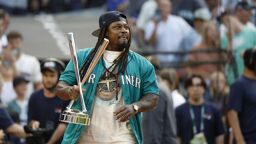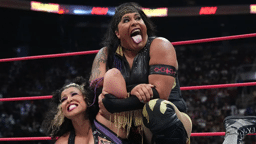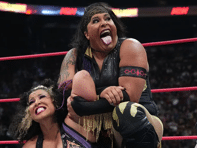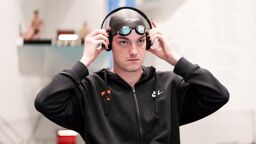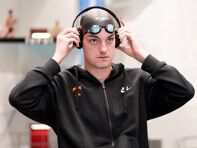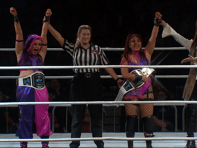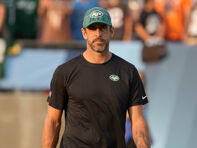“Realness” is a term that is quickly assimilating into common vernacular as programs like Pose, Kiki and Legendary thrust the trans/queer BIPOC world of ballroom toward new eyes. That process of transferring queer language always comes with the risk that adaptation will exclude its history and meaning. It’s a fun accomplice to a revelatory snap, but realness means so much more to LGBTQ populations whose very existance has been denied by many for generations.
Realness is also an intriguing concept when positioned against the very concept of pro wrestling. Its predetermined nature inevitably leads to its classification as a “fake sport,” but that view is incredibly short-sighted when wrestling’s cultural impact through storytelling and visibility is taken into account.
Pro wrestling’s realness comes from its ability to empower marginalized communities to translate their experiences and identities to wider audiences through an easily understood medium. And few moments in pro wrestling embodied that power than pro wrestling’s first kiki ball, Paris Is Bumping.
The looks were on point, from Sahara Seven’s pure royalty to Erica Leigh’s blooming Blossom. Ashton Starr, Eddy McQueen and Jared Evans brought the devastation. Corinne Mink literally leveled the competition with her 10s across the board.
😍😍😍😍😍#ParisisBumping pic.twitter.com/l6KoSlf8S9
— X A V I E R 3000 (@xavierfaraday) October 30, 2020
But the latest Billy Dixon joint truly showed its hand when pressing the embrace of narratives that challenge pro wrestling’s past and potential for its viewers. Candy Lee and Mariah Moreno brought trans bodily expression and sex positivity to the forefront with the aid of the Femme Queens of Aotearoa and a dash of candle wax.
A rekindling unfolded before our eyes as Washington Heights’ “Dark Side of the Daughter” cemented herself in the community, transforming her narrative from New Jack’s estranged child to a queen who won’t surrender her relationship with pro wrestling for anyone.
Dixon himself delivered the physical manifestation of making the pro wrestling industry realize that the revolution is here, soundtracked by Larry Legend’s chant of “executive realness,” with one hell of a dancing partner in Darius Carter. The two turned questions about the definition of pro wrestling, gender and acceptance into statements.
WRESTLING
— 🎬Tiffany Scaryhill's Killer October🎃 (@ThatRoseTattoo) October 30, 2020
EXECUTIVE
REALNESS@TheBillyDixon #ParisIsBumping pic.twitter.com/8ShBm5Bqkr
Dixon’s exclamation “This is what the future of wrestling executives is going to look like” prior to the match underscored that point, serving notice that wrestling will keep moving forward no matter the obstacle.
Can you name another wrestling show where someone screamed Marsha P. Johnson’s name before slamming their opponent through a wooden door?
Paris Is Bumping’s message is that that question won’t have to be asked in the future.
If there is one lasting image that defined the show it was Dixon’s outburst of emotion after vanquishing Carter. The moment felt as heavy as Dixon’s head felt in his hands. In a year with multiple events that placed LGBTQ identities on the marquee, Paris Is Bumping symbolized the passion and grit this movement has employed for years.
A group turned a bar in the middle of rural Maryland into a house of glamour and belonging, a tribute to the tenacity and imagination of the community that introduced the world to ballroom in Paris Is Burning in and of itself. That is the weight left with you: LGBTQ people will always create our spaces and keep on moving while others catch up. The confirming of Butch vs. Gore and Paris Is Bumping sequels, including Lee and Moreno battling for the Paris Is Bumping Grand Prize Championship, puts punctuation on that point.
Paris Is Bumping is pro wrestling realness. No scoring needed.




